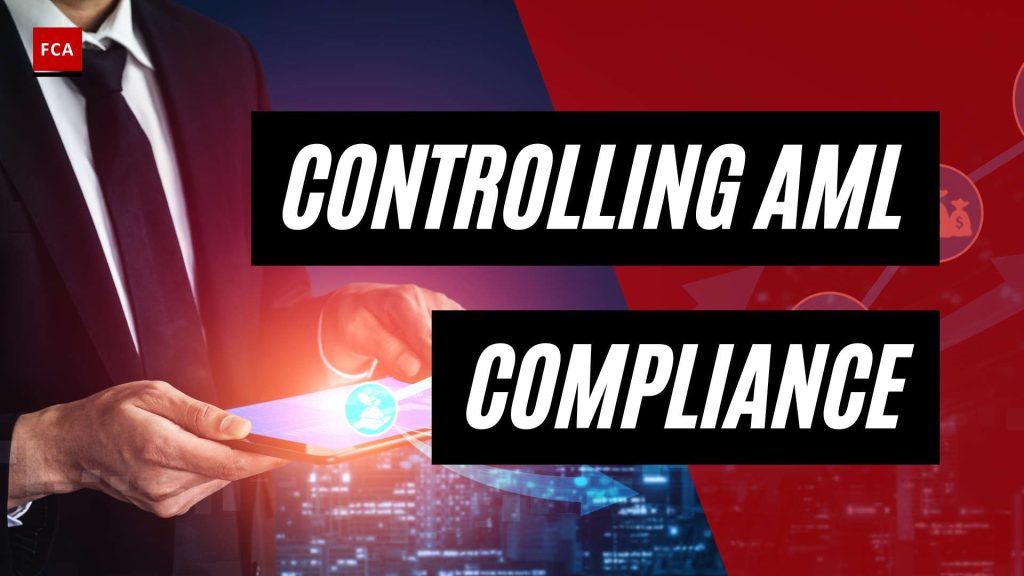Introduction to AML Compliance
In today’s global financial landscape, combating money laundering and ensuring compliance with anti-money laundering (AML) regulations is of paramount importance. The implementation of robust AML compliance measures is crucial for businesses operating in various industries, including banking, finance, and other sectors vulnerable to money laundering risks. In this section, we will explore the importance of AML compliance and the role of AML compliance software in effectively managing and mitigating these risks.
Importance of AML Compliance
Ensuring AML compliance is essential for businesses to maintain the integrity of their operations, protect themselves from legal and reputational risks, and contribute to the broader goal of combating financial crime. By complying with AML regulations, organizations can:
-
Prevent Money Laundering: AML compliance measures are designed to detect and deter money laundering activities, preventing the illegal transfer of funds derived from criminal activities. By implementing robust AML compliance programs, businesses can play a vital role in disrupting the illicit financial networks that fuel organized crime, terrorism, and other illegal activities.
-
Protect Reputation and Trust: Demonstrating a commitment to AML compliance helps businesses safeguard their reputation and maintain the trust of their clients, partners, and stakeholders. Compliance with AML regulations signals a dedication to ethical business practices and a proactive approach to combating financial crime.
-
Avoid Legal Consequences: Non-compliance with AML regulations can result in severe legal consequences, including hefty fines, penalties, and potential criminal charges. By implementing effective AML compliance measures, businesses can mitigate the risk of facing legal repercussions and ensure adherence to regulatory requirements.
-
Access Global Markets: AML compliance is often a prerequisite for accessing global markets and engaging in international transactions. Many countries have implemented stringent AML regulations to align with global standards set by organizations such as the Financial Action Task Force (FATF). Compliance with these regulations enables businesses to operate seamlessly across borders and expand their global reach.
Role of AML Compliance Software
To effectively manage AML compliance, businesses can leverage AML compliance software to streamline their processes, automate various tasks, and enhance their ability to detect suspicious activities. AML compliance software plays a pivotal role in:
-
Streamlining AML Processes: AML compliance software enables businesses to automate AML workflows, making compliance processes more efficient and reducing manual efforts. It streamlines customer due diligence, transaction monitoring, and reporting, enabling compliance teams to focus on high-risk activities and exceptions.
-
Automation and Task Management: AML compliance software automates repetitive and time-consuming tasks, such as data collection, analysis, and reporting. By automating these processes, businesses can reduce human errors, improve accuracy, and free up valuable resources for more strategic compliance activities.
-
Effective Detection of Suspicious Activities: AML compliance software leverages advanced technologies, including machine learning and artificial intelligence, to enhance the detection of suspicious activities. By analyzing vast amounts of data, identifying patterns, and applying rule-based algorithms, the software can identify potentially fraudulent transactions and flag them for further investigation.
By utilizing AML compliance software, businesses can enhance their AML compliance programs, strengthen their risk management frameworks, and ensure adherence to regulatory requirements. The software enables businesses to stay ahead of evolving money laundering threats, mitigate risks, and protect themselves from financial and reputational harm.
AML Regulations and Best Practices
To effectively combat money laundering and ensure compliance with Anti-Money Laundering (AML) regulations, businesses need to have a comprehensive understanding of the regulatory landscape and implement best practices. In this section, we will provide an overview of AML regulations, discuss key elements of AML best practices, and explore the importance of implementing AML compliance software.
Overview of AML Regulations
Governments worldwide have established AML regulatory bodies, such as the Financial Conduct Authority (FCA) in the United Kingdom, Financial Crimes Enforcement Network (FinCEN) in the United States, and the Financial Action Task Force (FATF) at the international level, to enforce compliance. These regulatory bodies require businesses dealing with financial transactions to implement effective AML controls and adhere to strict reporting standards.
AML regulations aim to prevent money laundering, terrorist financing, and other criminal financial transactions. They require businesses to implement measures such as customer due diligence, transaction monitoring, and suspicious activity reporting. Non-compliance with AML regulations can result in severe penalties, including massive fines, loss of reputation, and criminal prosecution (IXSight).
Key Elements of AML Best Practices
To effectively manage AML risks, businesses should follow AML best practices. Some key elements of AML best practices include:
-
Risk-Based Approach: Adopting a risk-based approach enables businesses to assess and manage AML risks in a targeted and efficient manner. By conducting risk assessments, businesses can identify high-risk customers, products, and geographic locations, allowing them to allocate resources effectively and implement appropriate control measures (aml risk-based approach).
-
Customer Identification Program: Implementing a robust Customer Identification Program (CIP) is essential for verifying the identity of customers and detecting potential risks. A strong CIP includes procedures for customer due diligence, enhanced due diligence for high-risk customers, and ongoing monitoring of customer activities (aml customer identification program).
-
Transaction Monitoring: AML transaction monitoring plays a critical role in detecting and reporting suspicious activities. Effective transaction monitoring involves the analysis of customer transactions, the identification of unusual patterns or behaviors, and the generation of alerts for further investigation.
-
Training and Awareness: Providing regular AML compliance training to employees ensures they are equipped with the knowledge and skills to identify and report suspicious activities. Training programs should cover regulatory requirements, internal policies, and emerging trends in money laundering and terrorist financing.
Implementing AML Compliance Software
To streamline and enhance AML compliance processes, businesses can leverage AML compliance software. AML software automates processes such as transaction monitoring, customer due diligence, and suspicious activity reporting, promoting compliance with AML regulations across various industries (IXSight).
Key benefits of implementing AML compliance software include:
-
Streamlining AML Processes: AML software improves operational efficiency by automating manual compliance processes, reducing errors, and redirecting resources to more productive areas within businesses (IXSight).
-
Automation and Task Management: AML software automates routine tasks, such as data collection and processing, allowing compliance teams to focus on high-value activities like investigating potential risks and suspicious activities. This helps businesses save time and ensure that compliance tasks are consistently performed.
-
Effective Detection of Suspicious Activities: AML software utilizes advanced algorithms, AI, and machine learning to monitor customer transactions in real-time, identify abnormal behavior, and generate alerts for further investigation. This enables businesses to preempt money laundering schemes and comply with statutory requirements (IXSight).
By implementing AML compliance software, businesses can enhance their AML compliance programs, improve efficiency, and ensure adherence to regulatory requirements. When choosing the right AML compliance software, businesses should consider key features, integration and implementation challenges, and the potential for leveraging AI and machine learning to enhance their AML processes.
Benefits of AML Compliance Software
To effectively navigate the complex landscape of Anti-Money Laundering (AML) compliance, businesses can leverage the power of AML compliance software. This software offers a range of benefits, including streamlining AML processes, automation and task management, and effective detection of suspicious activities.
Streamlining AML Processes
One of the significant advantages of AML compliance software is its ability to streamline AML processes. Manual compliance procedures can be time-consuming and prone to human error. By implementing AML compliance software, businesses can automate various tasks, such as customer due diligence, transaction monitoring, and regulatory reporting. This automation reduces the burden of manual work, allowing compliance professionals to focus on higher-value activities, such as investigating suspicious transactions. The use of AML compliance software can lead to increased efficiency and improved compliance outcomes.
Automation and Task Management
AML compliance software enables automation and task management, which improves the overall effectiveness of compliance efforts. With the help of predefined rules and workflows, the software can automatically flag and prioritize suspicious activities based on predefined risk parameters. This automation reduces the reliance on manual intervention and increases the accuracy and consistency of compliance processes. Additionally, the software provides task management features that allow compliance teams to assign, track, and monitor tasks related to AML compliance. This ensures that compliance obligations are met within designated timelines.
Effective Detection of Suspicious Activities
Effective detection of suspicious activities is a critical aspect of AML compliance. AML compliance software leverages advanced technologies, such as machine learning and artificial intelligence, to enhance detection capabilities. By analyzing vast amounts of data, the software can identify patterns, anomalies, and potential red flags associated with money laundering and other illicit activities. This proactive approach enables businesses to identify and investigate suspicious transactions promptly, reducing the risk of financial crimes. The use of AML compliance software can significantly improve detection accuracy and reduce false positives, leading to more efficient compliance efforts.
By utilizing AML compliance software, businesses can benefit from streamlined processes, automation, and enhanced detection capabilities. The implementation of this software can lead to cost savings, improved efficiency, and better compliance outcomes. To choose the right AML compliance software for your organization, consider factors such as scalability, integration capabilities, and the specific features offered by different software providers. By leveraging the power of technology, businesses can strengthen their AML compliance programs and ensure adherence to regulatory requirements.
AML Compliance Software Market
As the importance of AML compliance continues to grow, so does the market for AML compliance software. This section explores the growth of the AML compliance software market, leading software providers, and user insights and reviews.
Growth of the AML Compliance Software Market
The global AML compliance software market is projected to reach $3.4 billion by 2027, with a compound annual growth rate (CAGR) of 17.5% from 2020 to 2027 (Financial Crime Academy). This significant growth is driven by the increasing need for robust AML solutions to combat money laundering and financial crimes.
Regulatory requirements, evolving compliance standards, and the rising volume of financial transactions contribute to the demand for AML compliance software. Organizations across various industries, including banking, financial services, insurance, and more, are recognizing the importance of implementing effective AML compliance programs to mitigate risks and protect their reputation.
Leading AML Compliance Software Providers
Several software providers offer AML compliance solutions to meet the diverse needs of organizations. Among the leading vendors in the AML compliance software market are ACI Worldwide, FIS, and NICE Actimize. These vendors have garnered over 50 reviews each as of June 2021, making them well-established players in the industry (Gartner).
These providers offer comprehensive AML compliance software that assists organizations in implementing robust compliance programs. Their software includes features such as transaction monitoring, customer due diligence, sanctions screening, risk assessment, and reporting capabilities. By leveraging these solutions, organizations can enhance their ability to identify and prevent money laundering activities.
User Insights and Reviews
The majority of users utilizing AML compliance software come from the financial services industry, constituting 63% of the total user base as of June 2021 (Gartner). These users value the functionalities offered by AML compliance software, particularly those related to data analysis, alert management, and transaction monitoring. These features enable organizations to efficiently analyze large volumes of data, manage alerts generated by the system, and monitor transactions for suspicious activities.
While AML compliance software provides significant benefits, users also face challenges during implementation, configuration, and integration with existing systems. It is important for organizations to carefully plan and allocate resources to ensure a smooth implementation process.
User reviews provide valuable insights into the strengths and weaknesses of different AML compliance software solutions. They enable organizations to make informed decisions when selecting the software that best suits their specific compliance needs.
By considering the growth of the AML compliance software market, exploring leading software providers, and taking into account user insights and reviews, organizations can make informed decisions when implementing AML compliance software as part of their comprehensive AML compliance programs.
AML Compliance Software in the UAE
As the UAE financial institutions face increasing challenges due to the rise in financial crimes, fraud, and money laundering activities, banks in the region are actively adopting AML compliance management systems to mitigate risks effectively and ensure regulatory requirements are met.
AML Challenges in the UAE
The UAE, being a global financial hub, faces unique challenges in combating money laundering and financial crimes. The region’s strategic location and strong economic growth make it attractive to illicit actors seeking to exploit the financial system. To address these challenges, UAE banks are leveraging AML compliance software to strengthen their anti-money laundering efforts and protect against potential risks and reputational damage.
Advantages for UAE Banks
Adopting AML compliance software provides several advantages for UAE banks in their fight against money laundering and financial crimes. Some of the key benefits include:
-
Automation and Efficiency: AML compliance software enables UAE banks to automate transaction monitoring processes, reducing manual efforts and promoting greater efficiency in detecting suspicious activities within the financial system. By leveraging advanced analytics and reporting functionalities, real-time monitoring of transactions and activities becomes possible, allowing for prompt identification and investigation of suspicious behavior.
-
Enhanced Risk Assessment: AML compliance software empowers UAE banks with the ability to enhance their risk assessment capabilities. By leveraging the software’s advanced features, banks can better identify high-risk customers and transactions, enabling them to implement appropriate risk mitigation measures and improve overall compliance. This helps in meeting compliance standards and regulatory requirements, reducing the likelihood of involvement in illicit financial activities.
-
Reputation and Trust: The adoption of AML compliance management systems by UAE banks not only helps in meeting compliance standards and regulatory requirements but also enhances the overall reputation and trustworthiness of the financial institutions in the eyes of customers, stakeholders, and regulatory authorities. By demonstrating a commitment to combating money laundering and protecting the integrity of the financial system, banks can promote a more secure and transparent financial ecosystem in the region.
Enhancing Risk Assessment and Monitoring
One of the key areas where AML compliance software proves invaluable for UAE banks is risk assessment and monitoring. The software provides banks with advanced tools and capabilities to identify and assess potential risks associated with customers and transactions. By leveraging artificial intelligence and machine learning technologies, the software can analyze large volumes of data and detect patterns indicative of suspicious activities.
Through real-time monitoring, UAE banks can proactively identify and investigate suspicious transactions, allowing them to take necessary actions promptly. This proactive approach helps in mitigating risks and reducing the likelihood of financial crimes going undetected.
By adopting AML compliance software, UAE banks can enhance their compliance efforts, improve risk assessment capabilities, and strengthen their overall AML framework. This not only helps in meeting regulatory requirements but also ensures the financial system’s integrity, ultimately protecting both the banks and their customers from the risks associated with money laundering and financial crimes.
AML Transaction Monitoring Tools
When it comes to AML compliance, the importance of robust transaction monitoring cannot be overstated. AML transaction monitoring tools play a vital role in detecting and preventing financial crimes such as money laundering and terrorist financing. By leveraging advanced algorithms and technology, these tools analyze transaction data and flag suspicious activities, allowing financial institutions to protect themselves from reputational and financial risks (Sanction Scanner).
Importance of AML Transaction Monitoring
Effective AML transaction monitoring is crucial for financial institutions to comply with regulatory requirements and safeguard against illicit activities. By closely scrutinizing customer transactions, AML transaction monitoring tools help identify patterns and anomalies that may indicate potential money laundering or other illegal financial activities. This proactive approach enables institutions to take appropriate action, such as conducting further investigations, filing suspicious activity reports, and preventing financial crimes before they occur.
Real-time Updates and Compliance
Financial institutions face the challenge of adapting quickly to evolving AML regulations globally. With the constant publication of new AML regulations, AML transaction monitoring tools provide real-time updates and resources to help financial institutions comply and maintain a robust compliance program. These tools ensure that institutions stay informed about the latest regulatory changes, enabling them to adjust their monitoring processes accordingly and meet their compliance obligations (Sanction Scanner).
Enhancing Detection of Suspicious Transactions
Ineffective AML transaction monitoring can expose financial institutions to substantial financial risks and sanctions. In 2018 alone, global financial regulators imposed over $2.9 billion in fines due to AML disputes. AML transaction monitoring tools help minimize these risks by enhancing the detection of suspicious transactions. By analyzing transaction data using advanced algorithms, these tools can identify unusual patterns, high-risk activities, and potential red flags, enabling institutions to take appropriate action and mitigate the risk of financial crimes.
To enhance the effectiveness of AML transaction monitoring, it is essential for financial institutions to choose AML compliance software that offers features such as customizable rule sets, real-time monitoring, and advanced analytics capabilities. These features enable institutions to tailor their monitoring processes to their specific risk profiles and regulatory requirements, ensuring accurate and efficient detection of suspicious transactions.
In conclusion, AML transaction monitoring tools are vital for financial institutions to strengthen their AML compliance efforts. By providing real-time updates, enhancing detection capabilities, and facilitating compliance with regulatory requirements, these tools play a critical role in safeguarding the integrity of the financial system and protecting institutions from financial and reputational risks.
Choosing the Right AML Compliance Software
When it comes to selecting the appropriate AML compliance software for your organization, there are several key factors to consider. Ensuring that the software meets your specific requirements is crucial for effective anti-money laundering measures. Here are the key features to consider when choosing AML compliance software:
Key Features to Consider
-
Customer Screening: A robust AML compliance software should include customer screening capabilities. This feature enables you to screen individuals and entities against sanctions lists, politically exposed persons (PEPs), and other global wanted lists. By identifying high-risk customers linked to financial crimes such as money laundering and corruption, you can strengthen your compliance efforts and mitigate risks.
-
Transaction Monitoring: AML compliance software should provide transaction monitoring functionality, allowing you to monitor customer transactions in real time. The software should employ advanced algorithms and machine learning approaches to scan large volumes of data, detect suspicious transactions, and provide alerts for further investigation. Real-time monitoring enables timely intervention and helps prevent illicit activities.
-
Automated Reporting: An effective AML compliance software solution should have automated reporting capabilities. It should generate accurate and comprehensive reports for regulatory authorities, ensuring compliance with reporting requirements. Automated reporting saves time and reduces the risk of human error, enhancing overall efficiency.
-
Data Analysis and Pattern Identification: AML compliance software should leverage artificial intelligence (AI) and machine learning to analyze large amounts of data, identify patterns, and detect fraudulent activities. Real-time data analysis enables the software to recognize abnormal customer behavior and generate alerts for investigation and precautionary measures.
-
Integration with Existing Systems: Consider the compatibility and integration capabilities of the AML compliance software with your existing systems. Seamless integration allows for streamlined workflows and efficient data sharing between different departments and systems.
Integration and Implementation Challenges
Implementing AML compliance software may come with integration and implementation challenges. It is crucial to ensure that the software can seamlessly integrate with your organization’s existing infrastructure and systems. This includes data sources, customer management systems, transaction systems, and other relevant databases. Choosing a software provider that offers comprehensive support during the implementation process can help mitigate potential challenges and ensure a smooth transition.
Leveraging AI and Machine Learning
To enhance the effectiveness of AML compliance software, many solutions leverage AI and machine learning technologies. These advanced technologies enable the software to continuously learn and adapt to emerging patterns of money laundering and fraudulent activities. By leveraging AI and machine learning, the software can improve its detection capabilities, enhance accuracy, and minimize false positives. This technology-driven approach helps organizations stay ahead of evolving AML risks and regulatory requirements.
Choosing the right AML compliance software is essential for organizations operating in industries prone to money laundering risks. By considering the key features, integration capabilities, and the potential of AI and machine learning, you can select a software solution that aligns with your specific compliance needs. Implementing the right AML compliance software helps ensure regulatory compliance, mitigate risks, and protect your organization’s reputation.
Choosing the Right AML Compliance Software
When it comes to AML compliance, utilizing the right software is crucial for businesses to meet regulatory requirements and effectively combat money laundering and financial crimes. AML compliance software offers advanced features and automation capabilities that streamline processes, enhance detection, and ensure efficient compliance. Here are key factors to consider when choosing the right AML compliance software.
Key Features to Consider
A comprehensive AML compliance software solution should encompass key features that enable effective compliance with AML regulations. These features include:
-
Transaction Monitoring: AML compliance software constantly monitors customer transactions, conducts checks, and uses AI and machine learning for real-time data analysis and pattern identification. This allows for the detection of suspicious behavior and fraudulent transactions, generating alerts for investigation and precautionary measures. It ensures that transactions are closely monitored and compliance gaps are minimized.
-
Customer Risk Profiling: The software should have the capability to assess and profile customers based on their risk levels. This enables businesses to implement a risk-based approach and allocate resources accordingly to focus on high-risk customers. By identifying and monitoring high-risk customers, businesses can mitigate the potential risks associated with money laundering and illicit activities.
-
Automated Reporting: AML compliance software should have robust reporting capabilities that facilitate the generation of accurate and comprehensive reports for regulatory authorities. Automated reporting streamlines the reporting process, ensuring that businesses can meet regulatory requirements and demonstrate compliance effectively.
-
Data Deduplication: Data deduplication software is an important aspect of AML compliance software. It detects and eliminates redundant records, improving data quality and accuracy. By eliminating duplicate records, AML monitoring becomes more precise and efficient, reducing the workload for compliance team members.
Integration and Implementation Challenges
When selecting AML compliance software, it’s essential to consider integration and implementation challenges. The software should seamlessly integrate with existing systems and processes to ensure a smooth transition. It’s important to assess the compatibility of the software with your organization’s infrastructure and evaluate the level of technical support provided by the software vendor. A well-planned implementation strategy, including training and support, is crucial for successful adoption.
Leveraging AI and Machine Learning
The use of AI and machine learning capabilities in AML compliance software is becoming increasingly important. These technologies enable real-time data analysis, anomaly detection, and pattern recognition, enhancing the detection of suspicious transactions and activities. By leveraging AI and machine learning, businesses can stay ahead of evolving money laundering techniques and adapt their compliance efforts accordingly.
By carefully considering the key features, integration challenges, and the utilization of AI and machine learning, businesses can choose the right AML compliance software that aligns with their specific compliance needs. Implementing effective AML compliance software not only ensures regulatory compliance but also helps businesses protect their reputation, avoid penalties, and mitigate financial crime risks.








